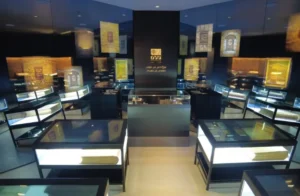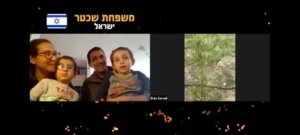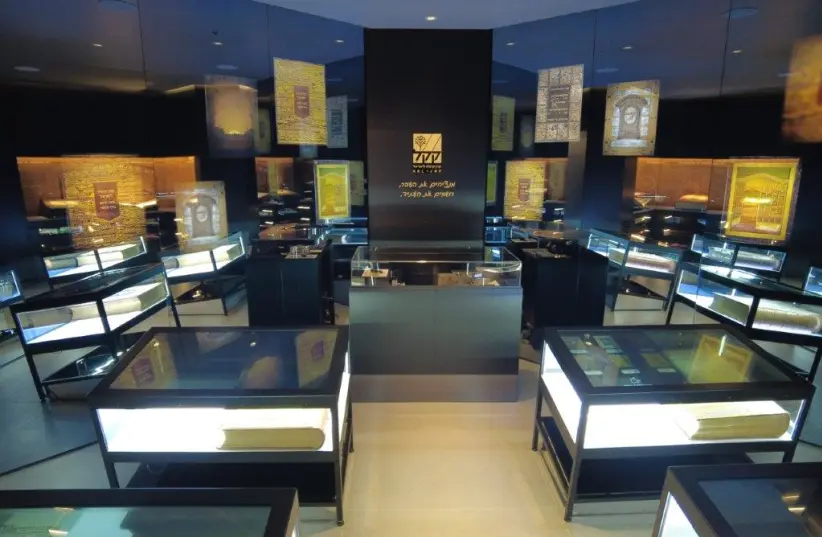From the digitized Books of Honor to tree plantings via Zoom, KKL-JNF is adopting advanced technologies to strengthen its fundraising and the connection of Diaspora Jews to the Land of Israel.

KKL-JNF, the oldest organization in the world to establish a platform for mass fundraising, has been undergoing a digital revolution in recent years, which has influenced its primary mission – involving the Jewish world in the development of the State of Israel.
“The world of donations has changed in recent decades,” says Shariel Gon, director of the fundraising department at KKL-JNF. “In the past, donors relied on the country’s founders and supplied the necessary funds because they needed to establish a country. Today, people want to know where their funds will be directed and want to receive regular reports and updates on the status of the project. Most of these donors have their money in the Diaspora, are heads of families, well-educated and want to be able to donate online.”
One of the fundamental goals of KKL-JNF is to involve the Jewish people in building the State of Israel, a project in which it takes an active and central part. It is the only body that has forested the country, in addition to the construction of trails, roads and various environmental and water projects.
“We have long since passed the stage where you knock on the door with a blue box and ask for a donation.”
KKL-JNF, founded at the Fifth Congress of the World Zionist Organization in 1901 as a tool for raising funds from Jews to purchase land in Israel, was not known for innovation and advanced technologies – but three years ago, this changed. “We realized we needed to utilize the latest technological methods that an organization on the scale of KKL-JNF deserves,” Gon says.
“KKL-JNF’s Internet presence has increased. We built an online fundraising system for the first time in the history of the organization. Any Jewish home can visit the website and view it in any language, from any country in the world, in ways that enable it to participate in building the country,” the fundraising director says.
“This is a significant and major breakthrough,” he says. “KKL-JNF is a traditional organization that played a central role in the establishment of the state through the purchase of land, and for us to use online methods is nothing less than a revolution. In the 1960s and 1970s, most of the donors were Holocaust survivors. It was a generation of donors who did not ask questions and only wanted to donate.

“Today’s generation seeks control over the projects to which it contributes. Donors want to know that their money is being utilized for the purpose for which it is intended. In addition, we must remember that in some cases, the economic situation in Israel is better than in the donor communities. Today it is up to the donor to be involved, and we must address this,” Gon says.
Unlike an Israeli supporter who can visit the project daily to examine its progress, those who donate from abroad need an alternative way to check progress. This is where the digital transformation comes into play, which is expressed in simulations, videos and virtual tours, and are available for donors on-site. “The need to do this has forced us to move forward and use technological means to exemplify the contribution,” says Gon.
“By virtue of our obligation to bring the Jewish people closer to Israel, we must work with a large variety of donors and not appeal only to the wealthy,” he points out. “In order to reach every Jewish home, we need to use the technologies that every home has today, such as social networks and websites that can provide information and payment capabilities. KKL-JNF’s projects are divided into several categories. For example, a person may request to contribute to the construction of a scenic road, a security road or a reservoir, and he can find projects approved by KKL-JNF.”
Virtual Plantings
The Plant-A-Tree department at KKL-JNF, managed by Michal Heifetz, has been in existence for many years. One of its main goals is to enable tourists to experience planting a tree in the Land of Israel with their own hands. Tourists receive explanations about the planting process, KKL-JNF and the Land of Israel, and also receive a planting certificate.
One of the advantages of the move to hi-tech is the ability to receive contact information from other people in their countries of origin, thereby spreading awareness of KKL-JNF and its activities through its local offices around the world.
“We want to make the Jewish people in the Diaspora a partner in establishing the state,” explains Heifetz. In the past three years, she has led the department’s transition from offline marketing, in the form of flyers in hotels, airports and tourist sites, to online marketing. The idea behind the change is to use the funds from plantings to finance the enormous costs of the organization’s forestry operations.
“We are the foresters of the State of Israel, and this has huge costs,” says Heifetz. “We need to maintain the areas where we plant, prepare buffer paths, and prevent and treat fires. This amounts to tens of millions of dollars a year. I established a smart website, which presents and personalizes the tree planting experience in Israel.
“The site introduces planters or potential donors to the people they will meet when they come to plant in Israel, such as the foresters and workers who prepare the area,” she says. “You can designate a date, place and time for planting and order the number of seedlings you would like to plant. In addition, you can pay for the planting and receive the planting certificate from the site, and when you arrive in Israel, you can use the site to navigate to the planting area.
“Beyond tree plantings, the site provides additional offers and services that make things easier for visitors,” the Plant-A-Tree manager says. “For example, if you choose to schedule a tree planting in February, you will receive an email warning that it is a rainy season, along with an offer to purchase a poncho from KKL-JNF to protect against the rains. Using advanced technology, we can offer the product to the donor in his native language, alongside other complementary products that will make the experience easier.”
Heifetz adds that the Covid-19 period, which prevented people from meeting physically, was a challenge but also an opportunity. “In the wake of Covid-19, we started planting on Zoom, which allowed us to turn the plantings into a virtual celebration. The donor is sent a link to Zoom, and on the other side is our representative in the field who explains the process to him and presents him with his choices, and finally performs the physical planting with the donor watching online.”
Digital Books of Honor
One of the most significant expressions of the technological progress that KKL-JNF has made recently is in its “Books of Honor.” The tradition began at the beginning of the last century when the decision was made to establish KKL-JNF and purchase land in Israel. Since it was not possible at the time to honor the donors through signs and sites on the ground, as is customary in hospitals and universities, the Jewish mind conceived the idea of Books of Honor.
“These are thick books that weigh 90 kilos, made of parchment, on which a scribe lists the donations collected to purchase the land,” says Elazar Hershkovitz, KKL-JNF’s Director of Projects.
“The first names listed were the heads of Zionism, including Theodore Herzl and Yona Kremenezky, the first chairman of the JNF and the first donor,” he recalls. “Using this method, they raised money, purchased land and established what we know today as the State of Israel. It was the first crowdfunding startup ever created.
“Over the years, the concept developed and beyond the Golden Books of the Zionist leadership, special books were published to mark bar mitzvahs, marriages and more,” he said. “There are over 200 different books in which Jews who donated or were commemorated by family members are listed. It’s like the chain of generations of the Jewish people – the hidden scrolls of Zionism.”
Hershkowitz was tasked with compiling the Books of Honor. He collected them and ensured that they were restored and digitized. “I found the books scattered in the organization’s offices, without any rules for preservation or safety,” he says. “Today, we have a computer system, and with one tap, we can locate any registrant. There are millions of Jewish records in these books. Some of these people perished in the Holocaust, and this is the only record of them that remains.
“In the second stage, we developed a sophisticated computer system that can present the stories of the donors,” the director of projects says. “We filmed videos of opinion-makers, in which they call on the Jewish people to continue the tradition. Among the donors who took part in the project was the former Chief Rabbi of Israel, Rabbi Lau, whose scribe wrote his name in the Books of Honor in his private study room.
“On the other side is Tal Brody, an outstanding basketball player who immigrated to Israel as part of the Maccabiah Games and brought the European Cup to Israel with Maccabi Tel Aviv. Brody, who popularized the phrase ‘We are on the map,’ made a video in which he calls upon all Jews to register.”
In the coming weeks, the technological revolution that KKL-JNF is undergoing will culminate with the inauguration of the Hall of Books of Honor at the organization’s head office in Jerusalem, which will present the books and some of their most prominent figures, using advanced technological means.
“We are using the most low-tech thing, which is books, and presenting them to the public through the most advanced means, such as 3-D simulations and multimedia,” explains Hershkovitz. “The Book of Honor is presented in a special showcase, with a glass screen with touch technology, which allows you to browse through the book and view the story of the donor. Never before has KKL-JNF presented itself in such a technologically advanced way.
“Those who visit the hall will also be able to learn about history, search for relatives and even donate,” he adds. “Even the registration experience is technological. The certificate will be written on the tablet in front of the donor by a pen attached to an advanced robotic hand, and the donor can leave the hall with the certificate in hand. In addition, we are preparing a virtual tour of the complex from anywhere in the world, enabling online searches for names of relatives and registering as a donor in the books.”
Digital Transformation
The person in charge of the entire technological system at KKL-JNF who is leading and supervising the organization’s transition is Uri Aizikovich, head of the KKL-JNF’s computer system.
“In the past three years, KKL-JNF has been storing old systems, adopting off-the-shelf products and using advanced technologies to put the donor at the center,” he says. “We have entered the world of digital marketing, relying on advanced information systems, to strengthen the relationship with the donor and provide him with various services and capabilities so that he will become a partner of KKL-JNF for years to come.
“In recent years, there has been a generational leap in the perception and use of advanced technologies to achieve organizational goals,” Aizikovich says. “For us, it has become the main task of the board of directors to raise money through computerized and advanced means, to give every Jew in the world the opportunity to express themselves in the State of Israel through KKL-JNF and via donations. To achieve this goal, we must speak technologically.
“We have long since passed the stage where you knock on the door with a blue box and ask for a donation.”
This article was written in cooperation with KKL-JNF.
Translated by Alan Rosenbaum.

